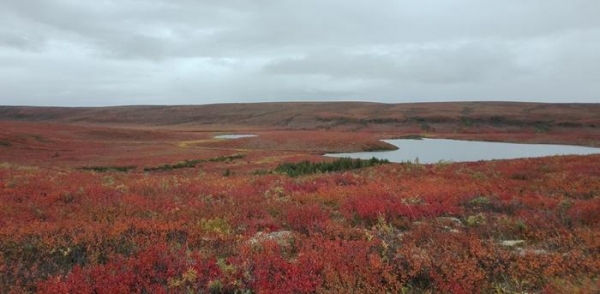In the Arctic and boreal biomes, well drained upland soils with a high potential for atmospheric methaneconsumption cover more than 80% of the land area. Despite the large upland coverage and their potential importance for methaneuptake, the underlying mechanisms, environmental controls and even the magnitude of Arctic soil methaneuptake are poorly understood.
A recent study led by researchers from the University of Eastern Finland and the University of Montreal finds that Arctic soil methaneuptake may be larger than previously thought, and that methane uptake increases under dry conditions and with availability of labile carbon substrates. The article was published in Nature Climate Change – one of the top-level journals in natural sciences.
The study was primarily conducted at Trail Valley Creek, a tundra site in the Western Canadian Arctic. The authors used a unique experimental set-up consisting of 18 automated chambers for continuous measurements of methane fluxes. No other automated chamber system exists this far North in the Canadian Arctic, and only few exist above the Arctic circle globally, most of which are installed at methane-emitting sites.
Read more at: University of Eastern Finland
Upland tundra landscape near Inuvik, Western Canadian Arctic. (Photo Credit: C. Voigt)


